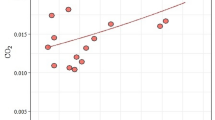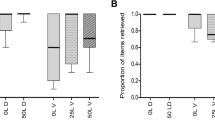Summary.
The diaspores of many plant species are adapted to dispersal by ants (myrmecochory). The ants carry the diaspores into their nests where the appendages of the diaspores (elaiosomes) are consumed. Little is known, however, about the fate of diaspores in the colony, i.e., whether elaiosomes are consumed only by the larvae or also by the workers. In this study, the distribution of Corydalis cava (Fumariaceae) elaiosomes was monitored between the larvae and the working caste of laboratory colonies of Myrmica rubra (Formicidae, Myrmicinae). In the first part of the study, 15N labelled elaiosomes were found to be mainly consumed by larvae. To find out whether elaiosomes are a more attractive food source than an artificial, nutritionally optimized diet for ants (Bhatkar diet), a combined 13C and 15N labelling experiment was conducted. Ants were offered 15N labelled elaiosomes for two days (pulse labelling), while being continuously fed with 13C labelled Bhatkar diet over 19 days. Under the given laboratory conditions, elaiosomes proved to be a far more attractive diet for the larvae than Bhatkar diet, contributing 87 ± 2% of the daily nitrogen and 79 ± 3% of daily carbon incorporation of larvae during the first four days of the experiment. The mean elaiosome incorporation met 73 ± 5% of nitrogen and 63 ± 6% of carbon demand of workers during the first four days of the experiment. Generally, incorporation rates in workers (per dry body mass) were lower both for carbon and nitrogen during the experiment – by a factor of 6.8 for nitrogen and by a factor of 6.2 for carbon compared to larvae. On a colony basis, workers received 39% and larvae 61% of the elaiosome nitrogen. The results indicate that elaiosomes are a major food source for growing larvae and thus support the hypothesis that elaiosomes play an important role in the life cycle of temperate ants.
Similar content being viewed by others
Author information
Authors and Affiliations
Corresponding author
Additional information
Received 22 December 2003; revised 16 June 2004; accepted 22 June 2004.
Rights and permissions
About this article
Cite this article
Fischer, R.C., Ölzant, S.M., Wanek, W. et al. The fate of Corydalis cava elaiosomes within an ant colony of Myrmica rubra: elaiosomes are preferentially fed to larvae. Insectes Soc. 52, 55–62 (2005). https://doi.org/10.1007/s00040-004-0773-x
Issue Date:
DOI: https://doi.org/10.1007/s00040-004-0773-x




